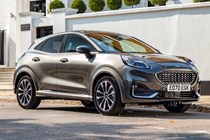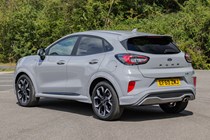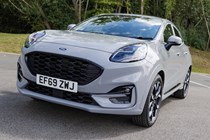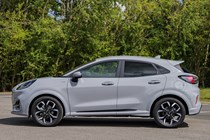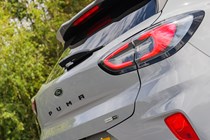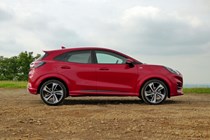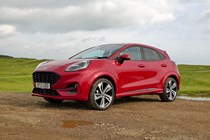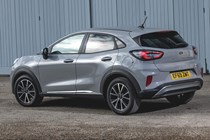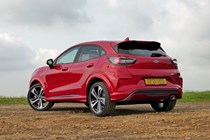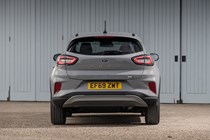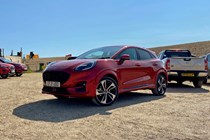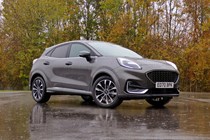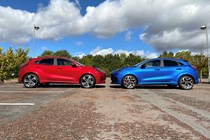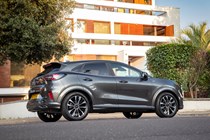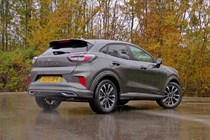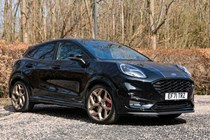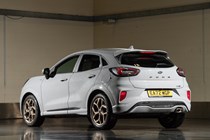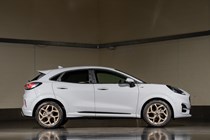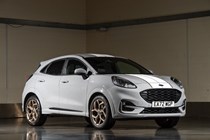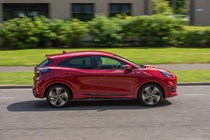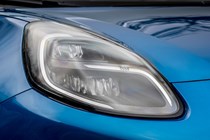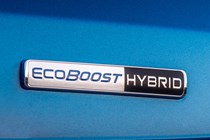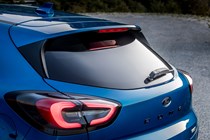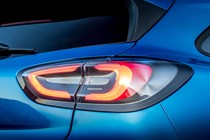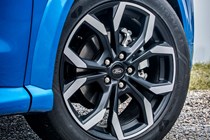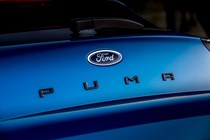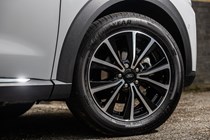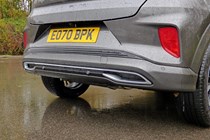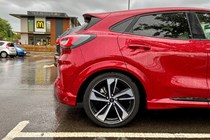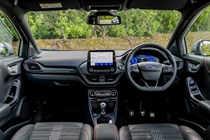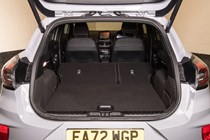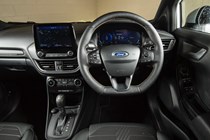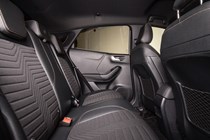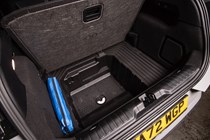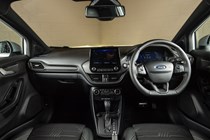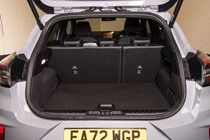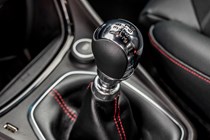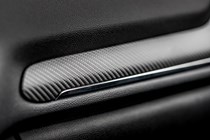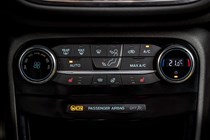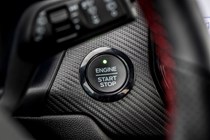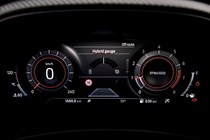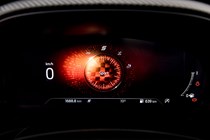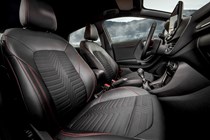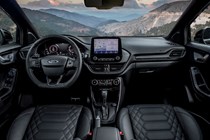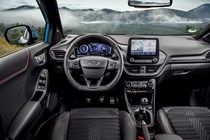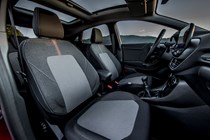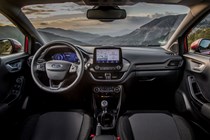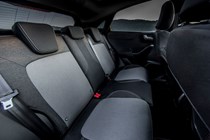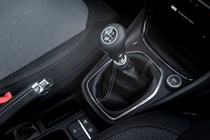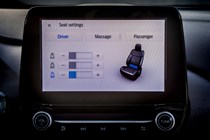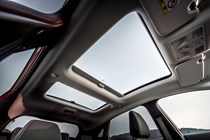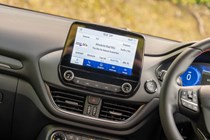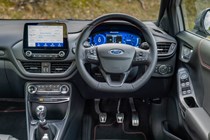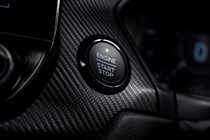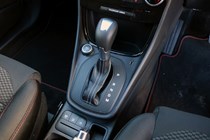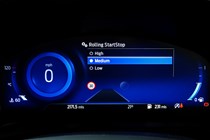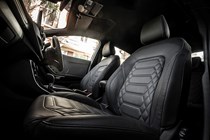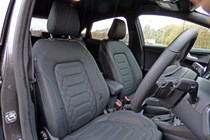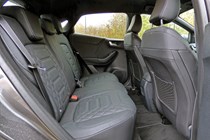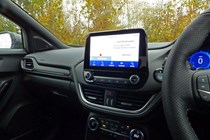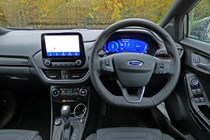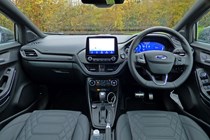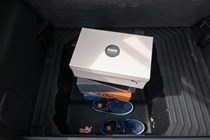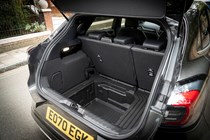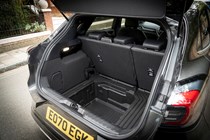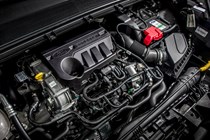Ford Puma engines, drive and performance
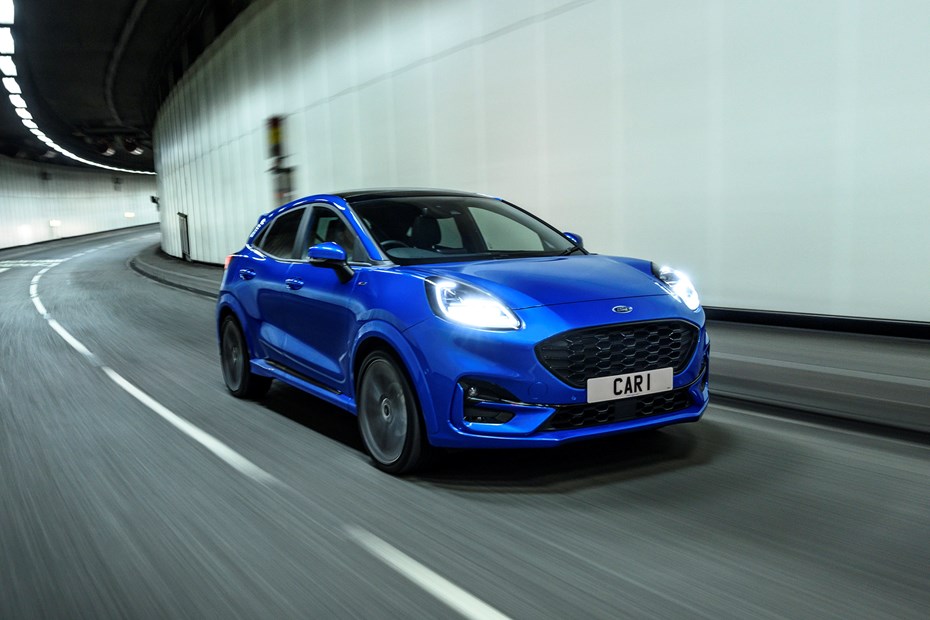
- Petrol-only engine range
- Mild hybrid tech boost efficiency
- Automatic gearbox available
Petrol engines
Ford kept things simple with the Puma. The standard car is only available with two 1.0-litre three-cylinder petrol engines, both of which feature mild hybrid assistance. The entry-level unit produces 125hp, while the more expensive version has 155hp. Both send drive to the front wheels via a six-speed manual gearbox as standard, although a seven-speed automatic is available as an optional extra. We’d recommend you avoid the automatic, though. It doesn’t suit the car.
They’re both willing little units, offering a surprising turn of speed and ruthless fuel efficiency. Both these traits are thanks to Ford’s mild hybrid system. The technology comprises a small battery pack and an electric motor bolted to the engine. It assists the engine when accelerating hard and captures energy that would otherwise be wasted when the car is slowing down.
Unlike a self-charging hybrid car (such as the Toyota Yaris Cross), the Puma’s electric motor can’t drive the car alone. Instead, it performs more of a supporting function – and it has some very clever tricks to deploy. For example, its start-stop system can disengage the engine while you’re crawling instead of waiting for the car to reach a complete stop. It also helps to mitigate the effects of turbo lag by providing extra assistance to engine before the turbo is operating at its best.
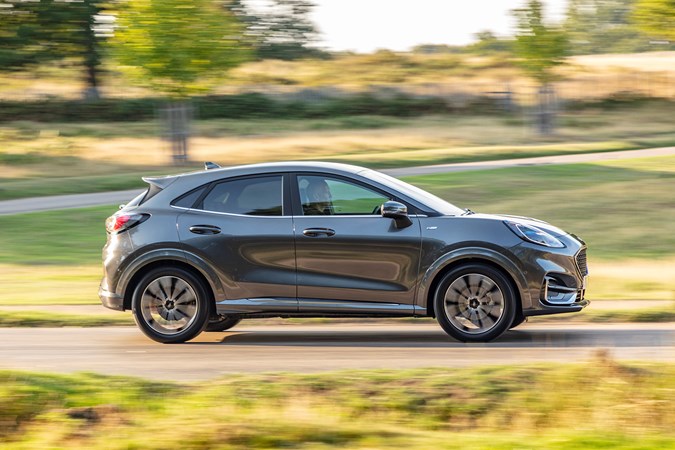
Even the 125hp model is fast enough for everyday driving, with plenty of power in reserve for overtaking or pulling onto a motorway slip road. The 155hp unit has an assertive amount of extra power which, while not exactly necessary, is very nice to have. The additional power means you don’t need to plan overtakes quite as thoroughly. You simply floor the gas and go.
If 155hp still isn’t enough for you, there is a third way to specify your Puma. At the top of the car’s line-up, there’s the standalone Ford Puma ST, which features the same 200hp 1.5-litre three-cylinder petrol engine as the recently discontinued Fiesta ST. It’s the most satisfying small SUV to drive, offering a fantastic blend of straight-line speed and cornering performance.
What’s it like to drive?
- Brilliant – it’s based on the Fiesta
- More weight higher up, though
- Sharp steering and loads of grip
The Ford Fiesta was one of the best small cars to drive – and, because the Puma shares the same underpinnings, it’s no surprise it’s also a riot in the corners. However, it isn’t quite as good as its baby sister. It’s 60kg heavier than the Fiesta, and that extra weight is carried further away from the ground on taller suspension. That can have an adverse effect on the way a car handles.
However, Ford has made some changes to the Fiesta’s suspension to compensate for the Puma’s taller SUV body style. Its rear suspension is stiffer, its shock absorbers are larger and it has a wider footprint to add stability while cornering. Thankfully, these alterations worked – and they help to make the Puma the best small SUV for keen drivers.
The standard Puma controls its body well. There’s very little roll, which means the car is happy to change direction quickly. ST-Line models get stiffer suspension for greater agility, but the change makes the Puma quite a lot more uncomfortable. Ford’s Titanium trim improves ride quality slightly, although the Skoda Kamiq and Volkswagen T-Roc are better for comfort.
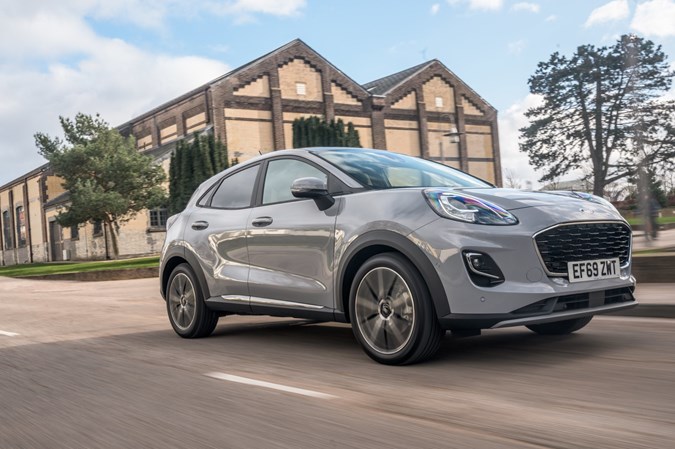
The Puma’s controls are perfectly judged. Its steering is well-weighted, talkative and pin-sharp, and its six-speed manual gearbox feels satisfyingly mechanical. We like the Puma’s brakes, too – the pedal offers plenty of feedback and a pleasingly analogue action, which makes it easy to judge to correct amount of pressure to apply when you’re tearing down a country lane.
Every model is equipped with a range of drive modes, which allow you to tailor the Puma’s throttle response, steering weight, traction control and gearshift timing (for automatic models) to your driving style. These modes are Normal, Eco, Sport, Slippery and Trail, with the latter two settings tweaking the amount of slip permitted by the traction control system to either improve grip in wet conditions or prevent the car from getting bogged down on off-road tracks.
Normal is the best place to leave it for everyday driving, although Sport does make the car feel a little more eager when you want to have some fun on a twisty road.


